Clear, compelling BPMN diagrams help you communicate information about complex processes to stakeholders. Gateways are just one type of BPMN symbol that you need to master to create them.
In this guide, we’ll help you understand what gateways are, how the different types of gateways represent different information, and how to use them in your own diagrams.
What are BPMN Gateways?
In business process modeling notation, or BPMN, a gateway is a point that can adjust the path of a process. There are three things this can mean for the process:
- It branches out into two or more mutually exclusive flows.
- It branches out into two or more sub-processes that happen concurrently.
- It can’t proceed until certain conditions are met.
Whatever the gateway represents, it’s a turning point in the process that “directs the traffic” or helps you understand dependencies.
Unlike other types of BPMN symbols, like events and activities, gateways don’t represent any action or time occurring. They just represent the point at which the process is “gated” until conditions are met or an event occurs.
Back to topTypes of BPMN Gateways + Examples
Looking at all the BPMN gateway options might feel a little overwhelming for a beginner—there are quite a few to choose from.
However, most gateways fall into one of 5 categories: exclusive, parallel, event-based, inclusive, and complex. Most of the gateways that you will see in a BPMN shape library are event-based.
Let’s dive into each type of gateway to explore what kind of decision or required condition it represents and how you would use it.
Exclusive Gateways
An exclusive gateway, represented by a diamond with an X inside it, indicates that the process is at a point of evaluation. If it meets certain criteria, it will move forward through the process flow. If not, it will either stop or branch out in a different direction. This can also be a way to show different exclusive outcomes of a decision or event.
Exclusive gateways are like a decision step on a flowchart—it means that the flows branching out from it can’t both occur, only one can.
For example, let’s say you’re diagramming a workflow that requires an approval step. After submitting the work for approval, it can be approved or rejected.
To represent this type of decision in your BPMN diagram, you could add “Submit for approval” as a step, then use the exclusive gateway with the two options branching out from it. This shows that these results are different and exclusive, not simultaneous, paths.
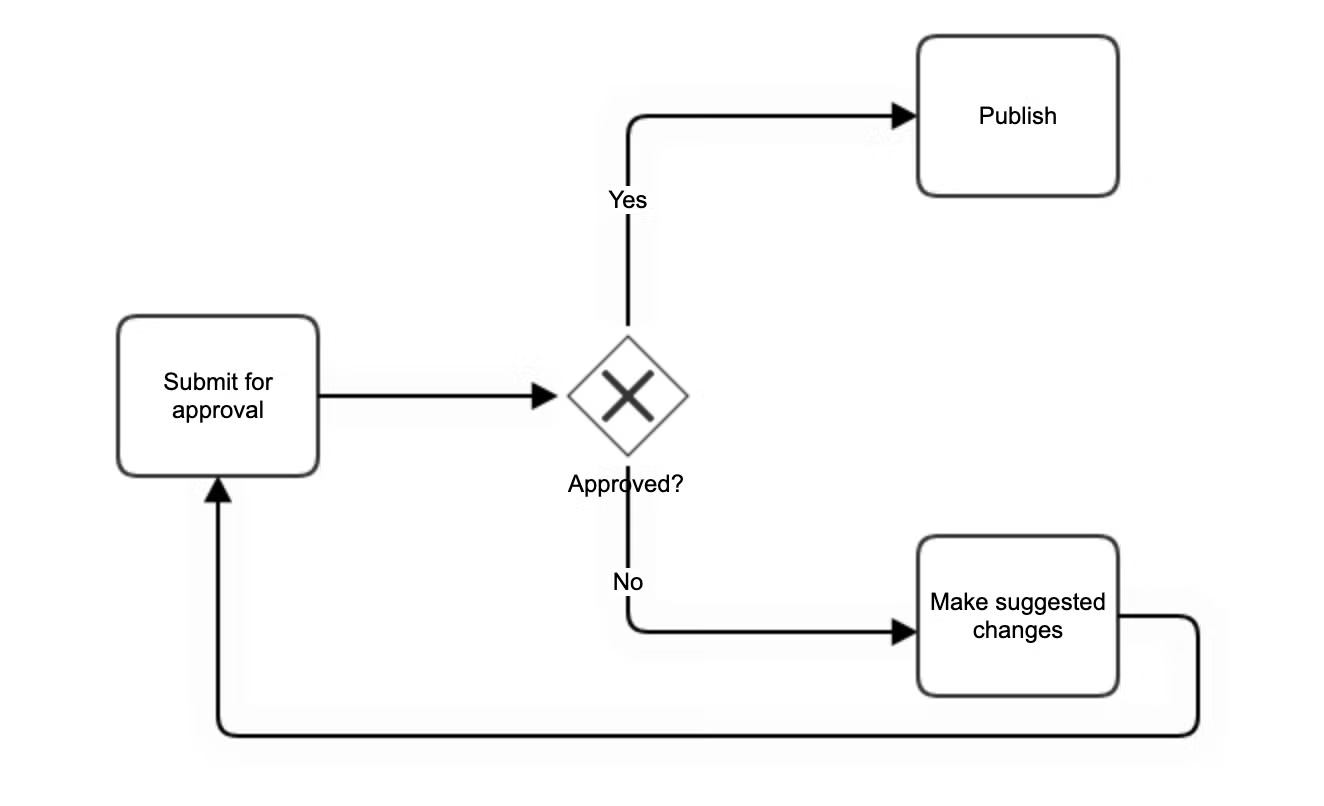
Parallel Gateways
A parallel gateway is represented by a plus sign inside of a diamond. Rather than a decision being made or an evaluation happening, this type of gateway represents two parts of the process that happen at the same time.
You can also use the parallel gateway to represent where the two flows are merging again into one, if that happens in your process.
Here’s an example: you are working on a product release with a new feature that will require additional customer-facing documentation. You want to have that documentation prepared before the release is ready to go out the door. So, you might have the technical writer creating documentation at the same time testing is happening. You can represent this flow with the parallel gateway.
Then, the two flows come back together, as the release is ready to go out once documentation and testing are completed.
Optionally, you can use swimlanes in your diagram to show that these tasks are being done concurrently by different people or teams.
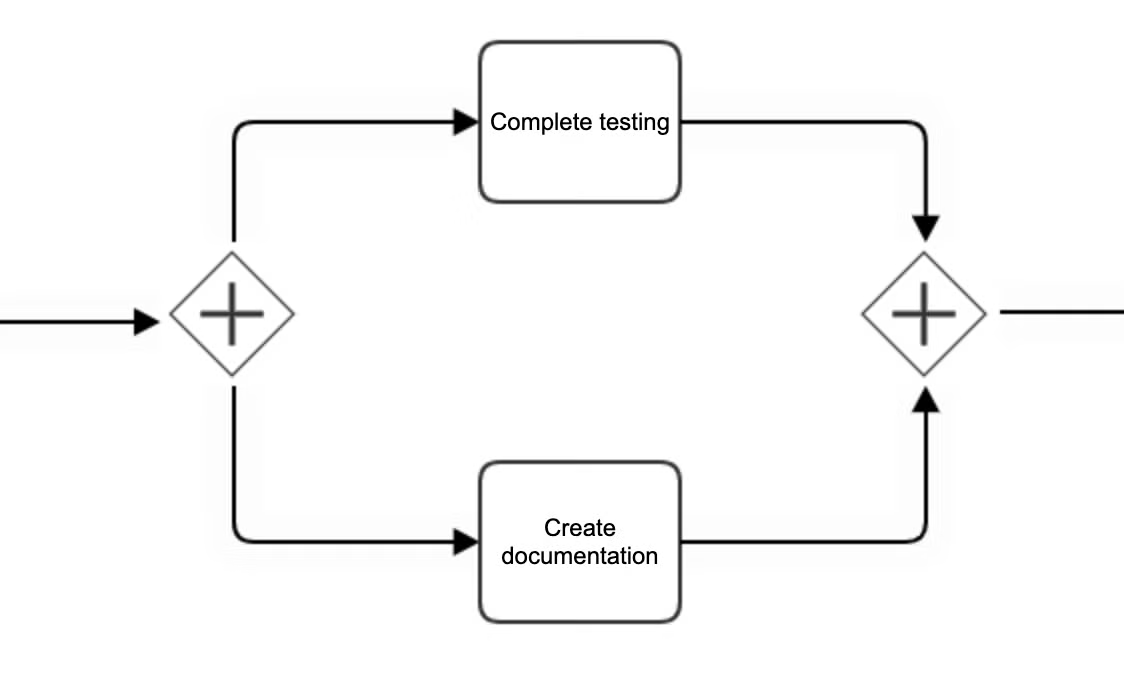
Event-Based Gateways
Event-based gateways are similar to exclusive gateways in that they require conditions to be met to proceed. In this case, the condition is the occurrence of an event. Events can take many different forms—messages, errors, and compensation are just a few.
There are two main types of event-based gateways: exclusive and parallel.
Exclusive Event-Based Gateways
An exclusive event-based gateway is often represented by a pentagon inside a circle inside a diamond. This type of gateway signifies that the process comes to a halt until a certain action or event occurs. Sometimes, this action must come from outside of the system (for example, a user or customer).
When you request feedback from a customer after they have placed an order, the next step in the process doesn’t happen immediately—you need to wait and see if they respond. That response (or lack of response in a certain time period) triggers the next step.
In this example, a response from the customer would trigger the next step of thanking them for their feedback and taking any required action based on their comments. No response in a week would trigger the next step of sending a follow-up message reminding them to give feedback.
To get an even deeper level of detail, you could even break it down into different flows triggered by positive or negative feedback from the customer.
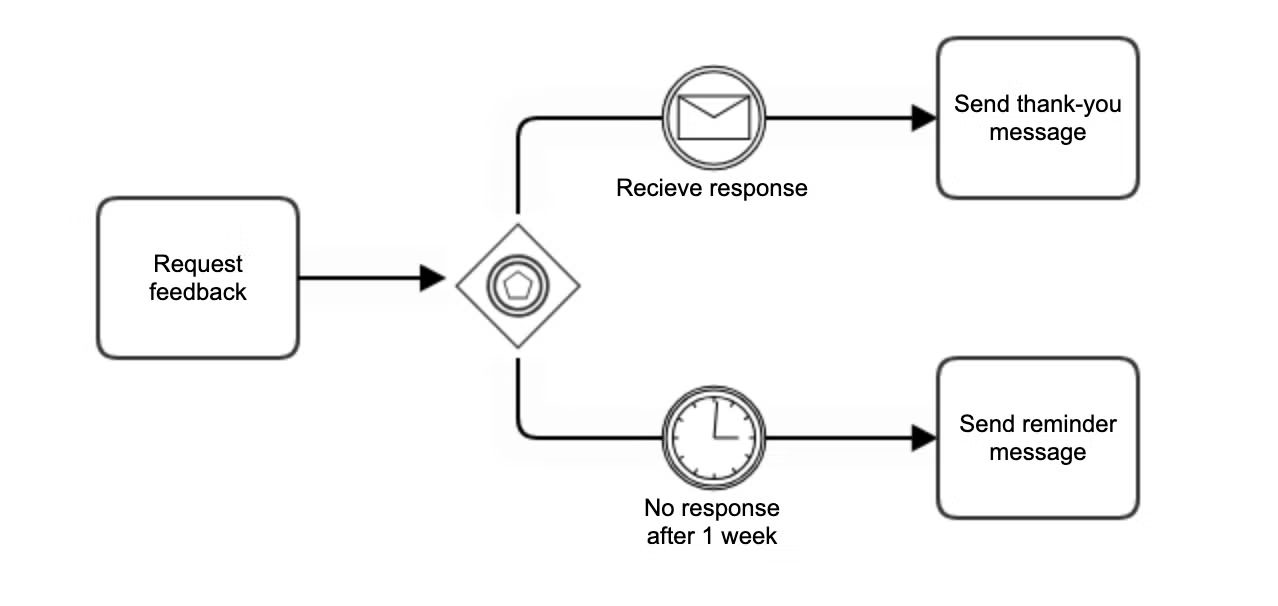
Parallel Event-Based Gateways
Parallel event-based gateways are similar to parallel gateways, but they specifically require an event to occur for the process to continue. Events can trigger multiple processes, but those processes are always dependent on the event in order to begin. Once the trigger event occurs, multiple flows can happen simultaneously.
Sometimes, when you place an order or schedule an appointment, you get multiple forms of communication confirming your action, like an email and a text message.
If you put this process in a BPMN diagram, it could be an example of a parallel event-based gateway. Your action of placing the order or scheduling the appointment is the event that triggers the process of sending the messages, which occur simultaneously.
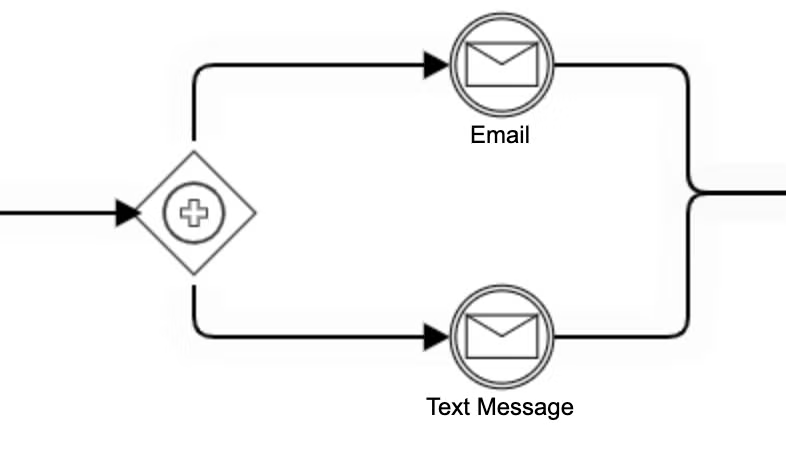
Inclusive Gateways
Inclusive gateways, represented by a circle inside a diamond, indicate that multiple flows can be triggered by certain conditions. Unlike a parallel gateway, multiple flows don’t always happen, but they can when the circumstances are right.
When a customer places an order on a website, they can choose whether to have it delivered or to pick it up themselves. Most of the time, it will either be one or the other. But what if your website allows for some items within the same order to be delivered while others are picked up?
In this situation, you can use an inclusive gateway to show that more than one flow can—but doesn’t necessarily need to—proceed based on the outcome of the previous action.

Complex Gateways
Sometimes, a specific situation doesn’t fit into the definition of any of the other types of gateways. Maybe that’s because it could be considered a combination of two other types of gateways, or maybe it’s unique in a different way. When you find yourself in this situation, you can use a complex gateway.
As you create your BPMN diagrams, try to avoid complex gateways when you can—but if you can’t, make sure to include text alongside the gateway explaining the conditions that must be met to proceed.
Back to topBPMN Gateways Quick Guide
Need to create a BPMN diagram and short on time? This quick guide can serve as your reference for when to use different types of gateways. It summarizes everything we’ve covered in this blog. Save it to your desktop for your next diagramming session ⬇️
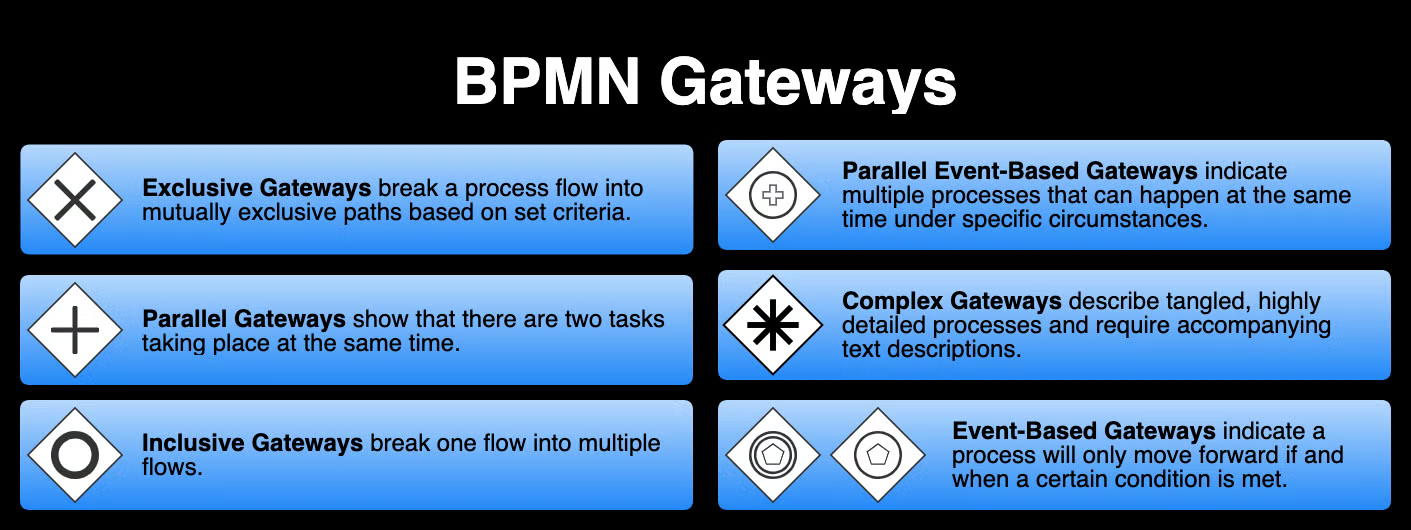
Back to top
Create a BPMN Diagram
Now you have everything you need to use BPMN gateways like a pro—but there are plenty of other elements that make up a standard BPMN diagram. To learn more about other elements you’ll need to know, check out our guide to BPMN symbols. You can also follow along with our BPMN tutorial as you create your diagram.
Whether you’re following along with a tutorial or ready to diagram on your own, you’ll need a diagramming tool to get started. Gliffy allows you to diagram directly in Confluence with no additional logins or connectors, so you can save time by working on the same platform where you create the rest of your technical documentation.
Start your free 30-day evaluation of Gliffy for Confluence Cloud or Data Center: